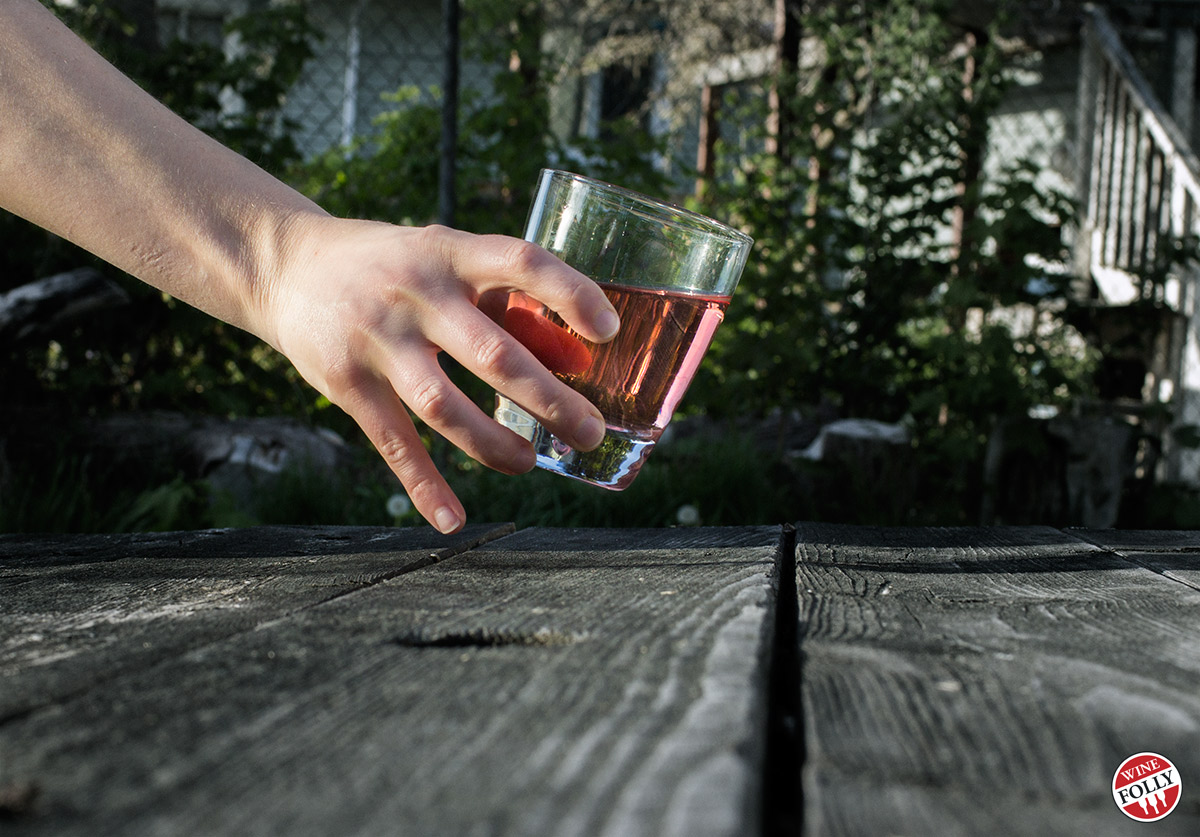Someone told you somewhere that rosé wine is both manly and sophisticated. You may not have believed them at the time — because of the pink hue — but now at least you’re curious.
So what are these gentleman-friendly rosé wines, and which ones should you try?
This simple guide outlines some of the most popular styles of rosé from around the world. Even if you’re more on the ‘bold savory’ vs. ‘fruit-forward’ end of the wine spectrum, there is probably a rosé for you!
A Guide to 10 Different Styles of Rosé
Rosé is made when the juice of red wine is strained from its skins before it becomes too dark.
Below we outline the different styles to hunt down for your palate and if you’re interested in how they make this tasty pink folly, check out The Many Different Shades of Rosé Wine.

Grenache Rosé
Style: Fruity
Tasting Notes: Usually, a brilliant ruby red hue with notes of ripe strawberry, orange, hibiscus and sometimes with a hint of allspice. You’ll find wines of Grenache to have moderately high acidity, but since most have quite a bit of color and body, you’ll want to serve them cold to keep them zesty.
Perfect pairing with this wine would be a summer evening and takeout Greek Gyros with dill tzatziki.

Sangiovese Rosé
Style: Fruity
Tasting Notes: A bright copper-red color that sparkles in the light, Sangiovese seems like it was made to be a rosé wine. Notes of fresh strawberries, green melon, roses and yellow peach complemented by quenching acidity.
A few Sangiovese rosé have a faint bitter note on the finish, which makes this fruity wine taste pleasantly dry. Serve cold in a white wine glass, perhaps with a bowl of Moroccan couscous and chicken.

Tempranillo Rosé
Style: Savory
Tasting Notes: Tempranillo rosé is growing in popularity from the Rioja region and other parts of Spain. With this style of rosé, you can expect a pale pink hue and herbaceous notes of green peppercorn, watermelon, strawberry, and meaty notes reminiscent of fried chicken.
Many Tempranillo rosé from this area also blend a bit of Graciano and Grenache to add floral notes to the flavor. A glass of Rioja rosé will class up any taco truck experience.

Syrah Rosé
Style: Savory
Tasting Notes: The ‘Saignée Method’ is typically used in making American Syrah rosé, which means it will have deeper colors of ruby and notes of white pepper, green olive, strawberry, cherry, and peach skin —definitely on the funky side.
Rosé of Syrah tends to be on the bolder end of the spectrum and best served slightly above fridge temperature in a regular red wine glass. This is a surprisingly good wine with pepperoni pizza or a bowl of chili.

Cabernet Sauvignon Rosé
Style: Savory
Tasting Notes: The ‘Saignée Method’ is the primary means of producing this type of rosé wine. Cabernet rosé is a deep ruby-red color with red wine-like flavors of green bell pepper, cherry sauce, black currant, and pepper spice.
The only significant difference is that Cabernet rosé wines usually have heightened acidity because they aren’t typically aged in oak.

Zinfandel Rosé (a.k.a. White Zinfandel)
Style: Sweet
Tasting Notes: Possibly the most popular rosé (in terms of volume but not necessarily for quality) sold in the United States and also 85% of Zinfandel production! Most ‘white’ Zinfandel is made deliberately to an ‘off-dry’ style with about 3-5 grams of residual sugar, making it moderately sweet.
It offers flavors of strawberry, cotton candy, lemon, and green melon with moderately high acidity. You’ll want to serve it ice cold, perhaps with Thai food.
The Manly Man’s Rosé Might be Tavel

Tavel Rosé (from the Côtes du Rhône)
Style: Savory and Rich
Tasting Notes: Said to be a favorite of writer and man’s man, Ernest Hemingway, Tavel is an unusually dry Rosé.
It has more body and structure than most pink wines and is considered to have all the character of good red wine, just less color. It is made primarily with Grenache and Cinsault, but nine varieties are allowed in the blend.
Usually high in alcohol and low in acid, this salmon-pink wine ages well, and its nose of summer fruits can turn to rich, nutty notes over time. Throw some brisket on the barbecue, grab your dog-eared copy of “The Old Man and The Sea,” and sit back and enjoy a glass of this earthy treat.

Provence Rosé
Style: Fruity and Lean
Tasting Notes: Rosé, from Provence, is the little black dress of pink wines. This wine is just as at home on the patio as it is in the dining room, Its fresh, crisp, dry style is a masterful match for almost any dish; even a juicy burger makes a perfect partner.
Grenache, Cinsault, Syrah, and Mourvèdre are all used to create this pale, pink rosé and to give it aromas of strawberry, fresh-cut watermelon, and rose petal, finishing with a distinctive, salty minerality on the palate.

Mourvèdre Rosé
Style: Fruity and Floral
Tasting Notes: Rosé made from Mourvèdre brings to mind thoughts of Southern France and the beautiful wines of Bandol. These wines, often a pale coral hue, are rounder and fuller-bodied than many other Rosés. Mourvèdre is floral on the nose with notes of violets and rose petals.
On the palate, this grape can be full of red plums, cherries, dried herbs, smoke, and even meat. Mourvèdre makes an excellent pairing at a Mediterranean dinner party, hovering with friends for hours over a meal of grilled lamb and fresh pita with black olive tapenade.

Pinot Noir Rosé
Style: Delicately Fruity
Tasting Notes: Pinot Noir is a diva on the grape runway. The fruit is intolerant of any extreme weather, is considered sensitive and temperamental, but when at its best, it can make for a very sexy glass of wine.
In rosé, Pinot Noir delivers bright acidity and soft, subtle aromas of crabapple, watermelon, raspberries, strawberries, and wet stone. The grape can produce earthy-but-elegant wines that are cool, crisp, and dry, and would be delightful with a fresh goat cheese salad or a festive crab feed on the beach.
You might also like White Pinot Noir

Rosé has long had a reputation for being an over-sweet, back-yard BBQ wine (and what’s wrong with that?) but in the past few decades, winemakers have brought complexity and verve into the style, as demonstrated by how many different flavorful options you have now.
Don’t be afraid to check with our pals at Wine Access to see what tasty Rosé wines they can ship directly to your palate.

